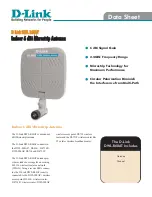
Theory of Operation:
Main Board
3-17
3.1.4.8 Buffers and VCOs
Q731 and surrounding circuitry is the prescalar buffer that takes the output of the VCOs and feeds
the prescalar input to the Trident IC, pin G1 (M_PRSC).
Q756 and surrounding circuitry is a buffer that provides the correct drive level to the receiver section
(via the transmission line RX_LO) and to the input to the TX buffer (Q774 and surrounding circuitry).
Q745 and surrounding circuitry provide the bias to the buffer. The buffer formed by Q756 and its
associated circuitry is called a pre-buffer” at this stage.
R703, R704 and R707 help provide some extra isolation to the receiver.
Q774 and surrounding circuitry is the transmit injection buffer. The transmit injection buffer provide
the correct drive level to the transmitter section (via the transmission line TX_INJ). Q767 and
surrounding circuitry provide the bias to the transmit injection buffer.
UHF1:
The voltage-controlled oscillators are varactor tuned. The voltage (0.3V – 10.6V) varies as it
is being applied to varactors D3102 to D3105 and D3135 to D3138 of their respective Voltage-
Controlled Oscillator (VCO). The capacitance of the varactors also varies, thereby changing the
output frequency of the VCOs. Both the VCOs are used to cover the entire 90MHz bandwidth of the
UHF range 1, 380MHz to 470MHz band.
• TX VCO covers the transmit frequencies from 380MHz to 470MHz
• RX VCO covers the receive Local Oscillator (LO) frequencies from 489.65MHz to 579.65MHz
The TX VCO and the RX VCO are selected using GPO1 and GPO2 respectively.
To select the UHF RX VCO, pin E5 (GPO1_TEST1) must be at a high logic level and pin D5
(GPO2_TEST2) must be at a low logic level. The output of the RX VCO is then fed to pin 5 (RF2) of
switch U3001. The output of U3001 is then split into two signals. One to the Prescaler buffer input
and the other to the prebuffer. The output of the prebuffer is then fed to pin 1 (RFC) of U738. The
output of U738, pin 5 (RF2) then goes to the attenuator (comprised of R703, R704 and R707) and
then fed to the receiver section via the RX_LO transmission line.
To select the UHF TX VCO, pin D5 (GPO2_TEST2) must be at a high logic level and pin E5
(GPO1_TEST1) must be at a low logic level. The output of the TX VCO is then fed to pin 4 (RF1) of
switch U3001. The output of U3001 is then split into two signals. One to the Prescaler buffer input
and the other to the prebuffer. The output of the prebuffer is then fed to pin 1 (RFC) of U738. The
output of U738, pin 4 (RF1) then goes to the transmit injection buffer (comprised of Q774 and
surrounding circuitry). The output of the transmit buffer, then goes to the transmit section via the
TX_INJ transmission line.
UHF2:
The voltage-controlled oscillators are varactor tuned. The voltage (0.3V – 10.6V) varies as it
is being applied to varactors D3102 to D3105 and D3135 to D3138 of their respective Voltage-
Controlled Oscillator (VCO). The capacitance of the varactors also varies, thereby changing the
output frequency of the VCOs. Both the VCOs are used to cover the entire 90MHz bandwidth of the
UHF range 2, 450MHz to 520MHz band.
•TX VCO covers the transmit frequencies from 450MHz to 520MHz
•RX VCO covers the receive Local Oscillator (LO) frequencies from 559.65MHz to 629.65MHz
The TX VCO and the RX VCO are selected using GPO1 and GPO2 respectively.
To select the UHF2 RX VCO, pin E5 (GPO1_TEST1) must be at a high logic level and pin D5
(GPO2_TEST2) must be at a low logic level. The output of the RX VCO is then fed to pin 5 (RF2) of
switch U3001. The output of U3001 is then split into two signals, one to the Prescaler buffer input
and the other to the prebuffer. The output of the prebuffer is then fed to pin 1 (RFC) of U738. The
output of U738, pin 5 (RF2) then goes to the attenuator (comprised of R703, R704 and R707) and
then fed to the receiver section via the RX_LO transmission line.
Summary of Contents for Astro APX 3000
Page 1: ...APXTM TWO WAY RADIOS APX 3000 DETAILED SERVICE MANUAL ...
Page 2: ......
Page 4: ...Notes ...
Page 6: ...vi Document History Notes ...
Page 10: ...x Table of Contents Notes ...
Page 12: ...xii List of Tables Notes ...
Page 18: ...xviii List of Figures Notes ...
Page 22: ...xxii CommercialWarranty Notes ...
Page 46: ...3 20 Theory of Operation Main Board Notes ...
Page 84: ...3 58 Theory of Operation Bluetooth Notes ...
Page 208: ...6 64 Troubleshooting Waveforms LF CW on Spectrum Analyzer Notes ...
Page 222: ...7 14 Troubleshooting Tables List of Board and IC Signals Notes ...
Page 282: ...8 60 Schematics Boards Overlays and Parts Lists Main Board Block UHF1 84012513001_A Notes ...
Page 390: ...8 168 Schematics Boards Overlays and Parts Lists Main Board Block VHF 84012512001_A Notes ...
Page 456: ...9 8 Debugging Fixture Powering up Covert Board Notes ...
Page 468: ...Glossary 10 Glossary Notes ...
Page 472: ...Index 4 Index Notes ...
Page 473: ......
















































